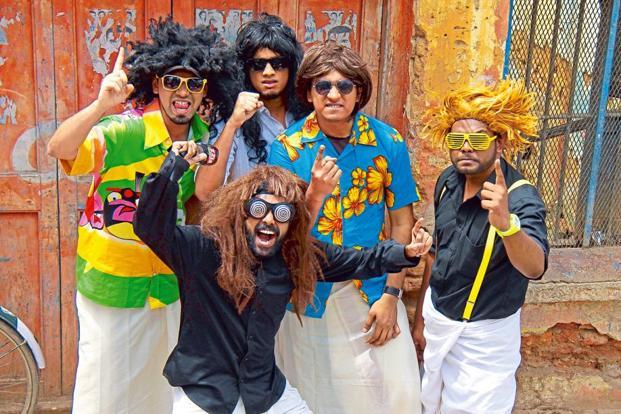
Rafting on the Kali river. Photographs from Wikimedia Commons
The waters weren’t raging, but it felt as if they would consume me. Every time we found a steady stretch where I could soothe my nerves, we would hit another rapid. Only the lush undergrowth along the river was able to distract me momentarily from the incessant rocking and bouncing on the water.
We were still on Grade 2 rapids, but I breathlessly concluded that white-water rafting was catastrophic. When we finished a 12km stretch of the Kali river, I sighed in relief and managed a nervous smile. We hadn’t met with an inglorious end.

The river bridge.This experience, five years ago, would be replayed on every single holiday with friends, till the bonfire area was crackling with laughter.
The children, especially, loved this story.
So this year, when our three families got off the train at Londa Junction in the Western Ghats, a friend’s teenage child already had a wisecrack ready. “Aunty Lakshmi, how do you plan to beat your nemesis this time?”
We were off to Ganeshgudi, the wildlife and adventure bastion of north Karnataka, for the last of the rafting season, which closes June-end. I had promised myself that I would try and enjoy the supposed thrill of being held captive to terror and chills. Or at least feign confidence.
We drove through a leafy corridor for 30km before checking in to the Hornbill River Resort, one of the few such places in Ganeshgudi that lie on the edge of the Kali. The outskirts of the Kali Tiger Reserve were a mosaic of green, yellow and brown. The green view, however, was broken by a sprawl of blue. It was the Supa Dam, built on the backwaters of the river. A “group selfie” was in order—travelling with the young means documenting every single second. I just hoped that the camera wouldn’t capture my nervous anticipation of rafting.

The agenda for the first day of our weekend break was rather placid. A naturalist from the resort accompanied us on a nature walk that ends in a natural jacuzzi. Drawn by the thought of relaxing in the middle of a forested patch, with river jets massaging our legs, we set out on the trail and were at it for about 45 minutes, hopping over trickling streams and fallen logs. Sure enough, the jacuzzi was just as we had imagined. A stream was feeding a clearing encircled by large rocks—a natural tub where we could sit. An afternoon spent listening to the gurgling of the river and the splashing of water by children was just what the doctor ordered.
Being a birding enthusiast, I was on the lookout for species like the Little Grebe, the Common Emerald Dove, the Crested Treeswift and the famous Malabar Pied Hornbill. The Kali Tiger Reserve and its surrounding areas are one of the richest in biodiversity in the country. The profusion of green shelters a wide variety of wildlife, from tigers, of course, to elephants, leopards and the Indian bison.
The day ended with our group colonizing the bonfire area. The jibes about my rafting prowess came from all directions. I, of course, spent a sleepless night.
The next morning, I said a quick prayer while fastening the life jacket. I reserved my spot at the far back corner of the raft, rather than the front, where the river can be experienced head on—literally. Initially, the rapids appeared gentle, but soon, much to my nervousness, the river became moody. It took us into its fold, flinging our raft up and down with the current. When we hit the Grade 3 rapids, the raft nearly flipped. The background score must have been my constant shrieking, for when we disembarked, the instructor cheekily suggested, “Ma’am, maybe you should stick to land activities.”
I brushed off his remark with a mock frown and walked away, relieved that I had survived the river, unscathed. Determined to enjoy the rest of the weekend without a worry, I made another resolution: that I would go rafting again.
Weekend Vacations offers suggestions on getaways that allow for short breaks from metros. The writer tweets at @lakshmisharath.
[“Source-Livemint”]

